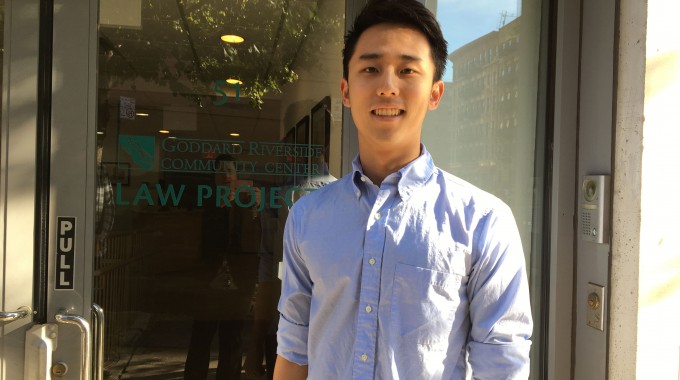Matthew Buck CC’17 reflects on his experiences helping New Yorkers through his internships and the ways in which his outlook was influenced by lessons learned from History Professor Barbara Fields and the Dewitt Clinton Professor of History Eric Foner CC’63, GSAS’69.
In Telling About the South, a seminar I took in Spring 2016 taught by History Professor Barbara Fields, our class read a number of authors, including Thomas Jefferson, Mark Twain and William Faulkner, whose work had, among other things, a strong sense of “place” — in other words, their lives and development as people were distinctly shaped by where they came from. Their words and Professor Fields’ teaching inspired me to learn more about my own community — about my “place” — in the City of New York.
I sought to do this through Columbia’s Kenneth Cole Community Action Program, which connects students with civic engagement and not-for-profit internships in our surrounding community. Through this program. I interned during my junior year at the Vera Institute of Justice’s Guardianship Project, which provides legal, financial and caseworking services to mentally ill and elderly people who would often otherwise be institutionalized.
While applying for my internship at Vera I also came across the Goddard Riverside Law Project, which provides free legal services and tenant-organizing support to low-income residents on the west side of Manhattan in an effort to preserve affordable housing and improve living conditions.
Intrigued, I made a mental note to contact Goddard at a later date and, after I’d completed my internship at Vera, reached out to ask if they offered internships for the summer. I soon found myself going from Vera’s tutelage about Article 81 of New York’s Mental Hygiene Law, which is related to guardianship for incapacitated people, to learning what single room occupancy is with Goddard throughout Summer 2016.
Both Vera and Goddard work directly with members of the community, often visiting them in their homes. On one client visit with a caseworker for Vera, I met Mr. “C” in his halfway house in the Bedford-Stuyvesant neighborhood of Brooklyn. I watched as the case worker talked to Mr. “C” about how to develop financial literacy skills so that he could eventually get an apartment of his own.
Site visits with Goddard showed me a new side of New York. Some of the bathrooms and hallways we visited had visible mold, rotting wood and even bed bugs, all ignored by negligent landlords. While I would never claim to completely understand the lives of the people I met and learned from, I felt immensely grateful to Vera, Goddard and the clients who welcomed me as I came to learn about personal aspects of their lives and to begin to develop a sense of their “place.”
Beyond the day-to-day mission of helping New Yorkers live their lives, I also got a glimpse into how advocacy for wider policy change works. In the process, I also came back to lessons I learned in The Radical Tradition in American History, another course I took in Spring 2016 that was taught by Eric Foner CC’63, GSAS’69, the Dewitt Clinton Professor of History. In particular I found it fascinating to learn how advocates of change have used different tactics throughout American history, from the abolitionist movement’s use of the press and the podium to the American Socialist Party’s direct involvement in electoral politics to the Civil Rights Movement’s sit-ins and marches.
I found the coalition meetings that Goddard attended especially enthralling because they grappled with similar questions about tactics and goals. Though sometimes the meetings could be long, and the politics tense, I realized that I left these meetings excited and energized. Witnessing advocates for communities as well as members of the communities themselves coming together produced a singular thrill as I began to understand the sometimes messy business of organizing and politics.
I was intrigued by the Kenneth Cole Community Action Program when I applied in Fall 2015, and I am appreciative that Vera and Goddard introduced me to communities and people who I never would have seen otherwise, despite some of them being only on the other side of Morningside Park. And now, armed with an introduction to the lives and struggles of others, I believe that I have become better equipped not simply for the working world — though I think I’m better equipped for that, too — but to go back into the classroom and the so-called “real” world and make both my experiences there more meaningful.
